
Osteochondrosis today is considered a "disease of the century", as it often affects people whose work does not require increased physical activity.
In most cases, changes in cartilage and bone tissue are observed in people aged - up to 40 years.
The disease can affect different parts of the spine, and the second most common is cervical spine osteochondrosis.
What is it?
Osteochondrosis is a degenerative disorder of the articular cartilage and adjacent bone tissue.
Previously, this term was used for a large group of osteoarticular diseases, but now it is only used for degenerative diseases of the spine.
Compared to other parts of the spine, the cervical region is the most mobile and has many nerve and vascular formations. The structure of the vertebrae is small in size, as well as the fact that they are surrounded by a relatively weak muscle corset.
This anatomical structure tends to the development of osteochondrosis, the severity of clinical manifestations depending on the nature of the changes in the intervertebral disc and its degree of destruction.
Causes of the development of this disease
The leading cause of cervical spine osteochondrosis and the most common is an inactive lifestyle.
Due to lack of physical activity with an inactive and inactive lifestyle:
- metabolic processes are disrupted;
- salt levels in the bloodstream and lymph fluid increase;
- Salt is stored in the cervical spine, kidneys and liver.
Damage to the cervical vertebrae is mainly caused by a lack of nutrients in the intervertebral disc. Therefore, the main causes of cervical osteochondrosis also include improper and unbalanced diet.

Risk Factors
There are many risk factors for cervical osteochondrosis.
The most common factors are:
- descent;
- age-related changes;
- cervical spine injury;
- hypothermia;
- hormonal disorders that lead to metabolic disorders;
- Some autoimmune diseases that damage cartilage tissue (systemic lupus erythematosus, rheumatism).
Why is it dangerous?
Not only the spinal cord and nerve roots pass through the cervical spine, but also the vertebral arteries, which are responsible for supplying blood to the back of the brain, medulla oblongata and cerebellum.
Thus, with cervical osteochondrosis, these arteries are squeezed, and as a result, cerebral circulation is disrupted.
In very advanced cases, compression of adjacent arteries and blood vessels and nerve plexus can result in consequences such as:
- lack of coordination;
- hearing and sight loss;
- stroke.
If the disease is not cured at an early stage, it can cause complications such as: protrusion of the intervertebral disc or herniated disc.
Disease progression
Cervical osteochondrosis, like osteochondrosis of other parts of the spine, develops gradually. There are 3 stages of development of the disease.
1 degree
Characterized by the onset of intervertebral disc destruction.
Special pain pain appears. Sometimes in stage 1 (preclinical), such pain may be absent, and osteochondrosis occurs with moderate discomfort in the neck.Cracks form in the annulus fibrosus, the strength and elasticity of the disc are disrupted, its height decreases, due to compressed nerve roots.
Grade 2
If osteochondrosis grade 1 is not treated or the treatment is ineffective, then a chronic condition arises, i. e. stage 2 osteochondrosis.
The pain becomes persistent, the destruction and compaction of the intervertebral disc persists and causes minor dislocations of the cervical vertebrae.
With cervical osteochondrosis at this stage, falling head syndrome can develop. This syndrome is characterized by severe pain, and the person should keep the head in a constant state to reduce pain.
grade 3
Grade 3 cervical osteochondrosis is accompanied by the following symptoms:
- headache;
- nausea;
- dizziness;
- neck "lumbago";
- upper limb sensitivity disorders.
The fibrosus annulus is almost destroyed, leading to complications of osteochondrosis - protrusion of the intervertebral disc or intervertebral hernia.
In the 3rd stage of osteochondrosis, the intensity of pain can be reduced, as the cartilage tissue exposed to the intervertebral disc does not exist, which means that there is no source of pain, but pinching the nerve roots remains, so the pain does not disappearcompletely.
Signs and Symptoms
There are many signs of this disease. And they depend on which vertebrae are damaged by the disease.
The typical syndrome of cervical osteochondrosis is:
- radicular syndrome;
- vertebral artery syndrome;
- cervical migraine syndrome;
- hypertension syndrome.
All of these syndromes are accompanied, first of all, by various types of pain.
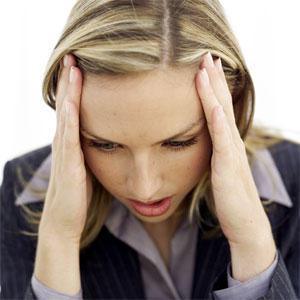
If we consider vertebral artery syndrome, then headaches are manifested here already in the early stages of the development of the disease.
In this case, the pain attack may be accompanied by:
- dizziness;
- unstable walking style;
- visual symptoms (appearance of fog in front of the eyes, decreased visual acuity, etc. ). fainted (with sudden movement of the head).
In hypertensive syndrome, an increase in intracranial pressure is determined.
Headaches are more irritating, may be accompanied by nausea and vomiting. With increased cervical osteochondrosis, an increase in temperature and an increase in ESR can be observed.
When the roots of the spine are compressed ("radicular syndrome"), the following neurological symptoms may appear:
- severe pain in the neck (cervix);
- neck pain that spreads to the forearm and humerus (cervicobrachialgia);
- pain in arm;
- sensation of cracking or cracking in the neck when turning the head;
- pain "radiates" to the ear, most often after a long stay in an uncomfortable position or sudden movement;
- pain or a lump in the throat, respiratory problems;
- numbness of hands and tongue;
- feeling swollen tongue;
- severe weakness;
- hearing and vision impairment;
- tinnitus;
- deterioration in general health.
In "cervical migraine" syndrome, irritation of the knot is observed, which causes disruption of cerebral duct reactivity and impaired blood circulation.
As a result, hypertension can develop, often accompanied by:
- clogged ears;
- tachycardia;
- sound in the head;
- rings in the ear.
When the arteries that supply the spinal cord are pressed, a spinal cord stroke can occur.
Disrupted blood circulation in the brain in osteochondrosis can cause:
- lack of oxygen in brain cells;
- mental disorders (depression, panic attacks);
- symptoms of epilepsy, such as short-term loss of consciousness and whole body tension - they are often confused with symptoms of epilepsy.
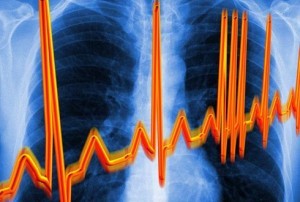
The most common signs of cervical osteochondrosis are changes and disorders of heart rhythm, for example, extrasystole or arrhythmias.
This symptom is very common among drivers and office workers.
Due to an inactive lifestyle, changes occur in the intervertebral disc of the cervical and thoracic spine, which causes disruption of the work of the heart.
In most cases, until osteochondrosis is cured, it is almost impossible to get rid of heart rhythm disorders.
Swelling under the eyes can also indicate osteochondrosis of the cervical spine.
Often they depend on the position of the head during sleep at night, disappear during the day and are combined with headaches, dizziness, headaches, etc.
Vegetovascular dystonia is one of the common diseases associated with this disease.
This is the result of a pinched vascular artery that runs along the side of the spinal space.
Diagnostic methods
An initial diagnosis is made by a neurologist during an initial examination of the patient. Recently, the doctor had to make a diagnosis by simply performing an external examination of the patient and sending him for an X-ray.
But, unfortunately, it is impossible to see a complete picture of the development of this disease on X-rays.
There are now examinations such as computed tomography and magnetic resonance imaging, with which you can fully assess the stage of development of the disease.
After the diagnosis is made, the patient is referred to a doctor who specializes in this field.
Which doctor treats?
Treatment is performed by a narrow focus specialist - vertebrologist or vertebroneurologist.
Treatment of cervical osteochondrosis
Severity of major clinical symptoms is taken as a basis for the treatment of cervical osteochondrosis.
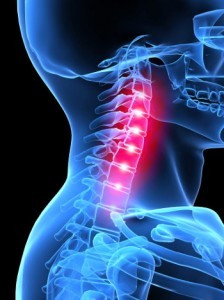
In the cervical spine, symptoms are mainly related to squeezing of blood vessels and nerve endings, therefore, during treatment, edema is first removed and blood circulation is restored.
There are many treatment methods used in the treatment of osteochondrosis of the cervical spine.
The most effective treatment is complex, which is a combination of several conservative treatment methods.
Complex treatment of cervical osteochondrosis can include the following traditional and non-traditional methods: drug treatment, massage, acupressure, manual therapy, physiotherapy, acupuncture, homeopathy, folk remedies, etc.
The main stages of treatment for osteochondrosis are the same for all localizations of the disease:
- First you need to relieve pain.
- Then the edema will be removed.
- At this stage, it is necessary to normalize blood circulation.
- Strengthens the muscle corset.
- Improves nutrition and tissue regrowth.
Only a team of specialists can choose the most appropriate therapy, which includes neurologists, physiotherapists, massage therapists, surgeons, and vertebral neurologists.
Like any disease, cervical osteochondrosis should be treated at an early stage. If you do not start the process, then at this stage you can achieve complete healing of osteochondrosis.
Unfortunately, stages 2 and 3 of cervical osteochondrosis are accompanied by complete or partial destruction of the intervertebral disc, therefore, this stage is characterized by a very long recovery process.
First Aid
How to relieve pain during exacerbations?
In case of severe pain, you should take painkillers from your home medicine cabinet: this can be an analgesic. You can also use pepper plaster for pain.
Diuretics can be taken in the event of swelling. Rubbing the neck with a pain-relieving ointment can help.
You can also use theneedle applicatorfor pain, which:
- relieves back pain;
- reduces muscle cramps;
- stimulates the work of internal organs;
- normalizes blood circulation.
Physiotherapy in exacerbations is contraindicated, as well as warming, as these effects can cause serious complications.
After relieving acute pain, it is necessary to see a doctor immediately for advice.
Drug Treatment
Treatment with medications is most often started with injections (in case of exacerbation), then switch to tablets and suppositories in combination with the use of topical ointments and gels.
Anesthesia during drug treatment is performed with steroid anti-inflammatory drugs.
It is very important to prescribe medications that restore brain circulation.
Muscle relaxation may be prescribed for pathological muscle tension. For more effective treatment, vitamins are taken in therapeutic doses and trace elements.
In the case of intervertebral hernias, surgical intervention is often recommended and the attending physician may recommend surgery.
Massage and massage yourself
This method works well with physical therapy and physiotherapy. You can take massage courses at any medical institution and by contacting personal practice.
Massage is needed for cervical osteochondrosis to strengthen muscles and relieve tension in the neck.
The task of a massage therapist is to remove harmful metabolic products by increasing the outflow and flow of blood in the diseased area, as well as relieving cramps from pathological areas.
The main techniques used by experts in neck massage are:
- caress;
- squeeze;
- rub;
- vibration;
- knead.
Self-massage techniques can be done using the following techniques:
- caress (movement should be gentle, without much effort, forming folds)
- kneading (deep effect on muscles, by gripping folds, pressing and pushing);
- vibration (vibration effect by hitting, shaking, tapping).
Massage should always be done by rubbing. During vibration, you can use a masseur.
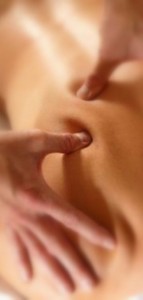
Acupuncture sort
Acupressure relieves headaches well with exacerbation of cervical osteochondrosis, helps with pressure surges, normalizes them.
Acupressure scheme:
- Effect on feng fu points, located under occipital protuberance, for 1 minute.
- Effect on feng chi point, located two fingers wide from the mastoid process of the skull.
- Impact for 1-1. 5 minutes at the ya-men point (located at a distance of three fingers from the feng fu point).
- Sedasi 1-1. 5 minutes at the point of da-chzhui (7th cervical vertebra).
After acupressure, you should lie down for a few minutes, as you may feel a little dizzy.
Manual therapy
Manual therapy helps to overcome acute and chronic pain, it also improves movement and improves body posture well.
The main methods of manual therapy for cervical spine osteochondrosis:
- Relaxing and segmented massage.Used to warm muscles and relieve tension.
- Mobilization.Influence aimed at restoring joint function with traction.
- Manipulation.A sharp pressure aimed at the pathological area of the patient. This procedure is accompanied by a special feature (return of the joint to its normal position).
Specialists who perform manual therapy should be fluent in this technique. Otherwise, any offense can cause injury.

Acupuncture
Acupuncture stimulates the release of cortisol into the bloodstream. This hormone has a significant anti-inflammatory effect.
Acupuncture is performed by acting on points near the edges of the scapula. The needle is inserted to a depth of 1 to 2 cm and left to act for 10 to 30 minutes.
Homeopathy
Medication treatment brings many adverse side effects, so homeopathy can be a substitute for proper treatment without any side effects.
Nutritional Features
Foods should be rich in calcium and magnesium.
These trace minerals are found in fish and seafood, nuts, legumes, and dairy products.
Often, osteochondrosis of the neck can be accompanied by atherosclerosis. In this case, a strict diet is recommended.
Diet is set for 3-4 months. It is necessary to limit the consumption of all foods that contain cholesterol. These include animal fats, fatty meats, fatty dairy products, etc. You should also limit or exclude the intake of salt, sugar, flour products.
It is recommended to stop bad habits (smoking, alcohol, etc. ).
Cervical osteochondrosis and alcohol are interrelated. The fact is that it enters the bloodstream, alcohol damages the cells, thus worsening the blood circulation that is already disturbed in osteochondrosis.
Therefore, you should limit it to a minimum, and while worsening, stop drinking alcohol completely.
Disease Prevention
To prevent cervical osteochondrosis, it is recommended to adhere to the following rules:
- sleep must be on a firm mattress and on a low pillow: the bending angle of the neck should not exceed 15 degrees;
- take a hot shower every day for at least 10 minutes;
- visit saunas and baths as often as possible: heat helps relieve neck cramps;
- give yourself aerobic activity and walk regularly at low rates;
- go swimming;
- after 25 years, avoid shock loads on the spine (jumping, running);
- while working non-stop, make sure you rest for five minutes every hour;
- Regular yoga exercises can prevent any manifestation of cervical osteochondrosis;
- refuses to go to the gym, as bodybuilding can provoke the appearance of a cervical disc protrusion;
- Physical exercise as prophylaxis against neck osteochondrosis helps strengthen neck muscles, relieving tension.
Frequently Asked Questions
What to do during pregnancy and how to treat it?
Often, during pregnancy is the first symptom of cervical osteochondrosis.
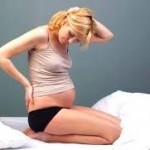
This is due to changes in hormone levels and tenderness of the vertebrae, also due to shifting of the center of gravity and excessive pressure on the spine.
Treatment of osteochondrosis in pregnant women is quite complicated, as it is limited primarily by drug methods aimed at relieving pain.
You can use natural ointments or use traditional medicine.
Any influence on the neck area (warming, exercise, etc. ) during pregnancy is strictly prohibited.
Does it occur in children and adolescents?
In children and adolescents, cervical osteochondrosis develops due to a lack of congenital or acquired cartilage tissue.
This is expressed by complaints of headaches, fatigue, dizziness and fainting.
Is it possible to warm the neck area?
Warming the neck with cervical osteochondrosis is strictly prohibited, especially at the stage of exacerbation of the disease, as warming can lead to increased edema and vasodilation of the brain.

How to sleep properly?
Sleep on a flat, hard bed with an orthopedic mattress.
The recommended and most comfortable position is on your side, with your shoulders resting on the mattress and your head resting on a small pillow.
The use of orthopedic pillows helps relax the muscles in the cervical spine, reducing nerve endings, which prevents headaches and insomnia.
Are physical activity and sauna allowed?
In preventive measures and in stage 1 cervical osteochondrosis, it is recommended to do physiotherapy exercises, swimming.
Weightlifting, hard work, exercise in the gym are strictly prohibited.
Visits to baths and saunas are also recommended only for the prevention of cervical osteochondrosis and in the early stages of the disease.
Comments
"I would like to share with my relatives in an accident how to deal with cervical osteochondrosis. A few years ago I had back pain. A visit to the doctor, the diagnosis was cervical osteochondrosis. Many things have been tried from treatment: physiotherapy, manual therapy and massageBut there is always a temporary relief, besides, all this is a very expensive procedure. I have to start studying this problem carefully. So I decided to try swimming. Once a week in the pool and grief do not know. "
"Due to too much work, I could not find time to see a doctor. And my relatives advised me to treat neck pain with warming, herbal compresses, ointments in various ways and other home treatments. that the neck has stoppedmove at all! I lay at home for more than two weeks, and then recovered for a long time. So my advice to everyone is to see a doctor as soon as your neck hurts and aches! So you will save time and notloss of health. "

























